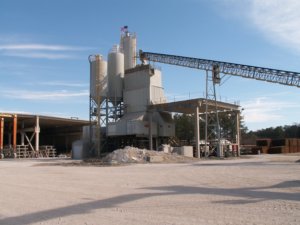23 Nov 2020 Investing in management systems compliant with ISO standards is a winning policy

Investing in management systems compliant with the ISO standards is a winning policy for construction companies and their customers. Although widely adopted in the manufacturing and industrial spaces, the construction industry has been slow to embrace the standards even in an era of enhanced focus on product quality, customer satisfaction, and sustainability. These standards provide a proven management system structure to organize your current processes and provide a continuous improvement environment through self-auditing and correction, customer feedback, heightened employee awareness and training, and data driven assessments.
Although recently, construction companies have adopted sophisticated ground level quality and employee competence monitoring programs, often they are scattered processes throughout the organization and not linked to core risk reduction and customer satisfaction initiatives. ISO standards can provide your construction business with guidelines to develop core management systems proven to be effective in over a million organizations. The American Society of Civil Engineers (ASCE) supports the development and application of quality management system standards, including the Quality Management System standard ISO 9001. In addition, ISO 9001 is referenced by per 48 CFR § 46.202-4 (Title 48. Federal Acquisition Regulations System Chapter 1. FEDERAL ACQUISITION REGULATION Subchapter G. CONTRACT MANAGEMENT Part 46. QUALITY ASSURANCE Subpart 46.2. Contract Quality Requirements) and compliance may be a requirement to be awarded a contract.
Beneficial ISO standards for application in the Construction Industry have proven to be:
- ISO 9001:2015 Certification for Quality Management System
- ISO 14001: 2015 Certification for Environmental Management System
Training your staff to adopt compliance ISO Standard methodologies can help your construction company achieve enhanced business productivity, boost product quality, and achieve higher rates of customer satisfaction.
If you have not looked at these standards in a while, note that the latest versions have significant improvements in creating a holistic view of your company’s business processes, as well as adoption of High-Level Structure (HLS). The High-Level Structure (HLS) is a set of 10 clauses and core text that all ISO management system standards are required to use in the future. This is so that all management system standards will have the same look and will enable seamless integration between systems of different disciplines. Below those headings are 56 sub-clauses that each define over 300 individual requirements, some specific to the standard discipline.
If you have read this far, you may be curious as to what are the 10 core clauses?
The first three clauses provide general information about the scope of your system while 4-7 contain the “beef”, mandatory requirements for your company to benefit from everything that comes from a properly executed management system.
Clause 4 – Context of the Organization
This clause requires an examination of the organization and its context (including the needs and expectations of interested parties), determining the scope of the management system and requires the process approach.
Clause 5 – Leadership
Charges senior management with accountability in the section for organizational roles, responsibilities, and authorities. They are responsible for leading, not just managing.
Clause 6 – Planning
Organizations are required to take a risk-based approach to the development, implementation, and improvement of their management system.
Clause 7 – Support
Infrastructure, process environment, monitoring and measuring devices, and knowledge needs must be determined, provided, and maintained.
Clause 8 – Operation
Processes must be controlled and monitored, customer requirements determined and reviewed, goods and services monitored, suppliers (external providers) and their products and services assessed.
Clause 9 – Performance Evaluation
Monitoring, measurement and analysis of goods and services, processes, the management system, and customer satisfaction. Analysis and evaluation of data, internal audits, and management review.
Clause 10 – Improvement
Non-conformances, corrective actions, and improvements.
Adoption of compliance to the new 2015 version of ISO 9001 and ISO 140001 can be a big win for your bottom line, heightened awareness to provide world class customer satisfaction, improve employee training and competence.
According to the iso.org, the benefits of an effective management system to an organization include:
- More efficient use of resources and improved financial performance
- Improved risk management and protection of people and the environment
- Increased capability to deliver consistent and improved services and products, thereby increasing value to customers and all other stakeholders
Keith Koontz, P.E., MBA is an Engineering and Management consultant who has worked extensively implementing, improving, and auditing Management Systems and is certified as a Lead Auditor for ISO 9001 and ISO 14001 Management Systems.

